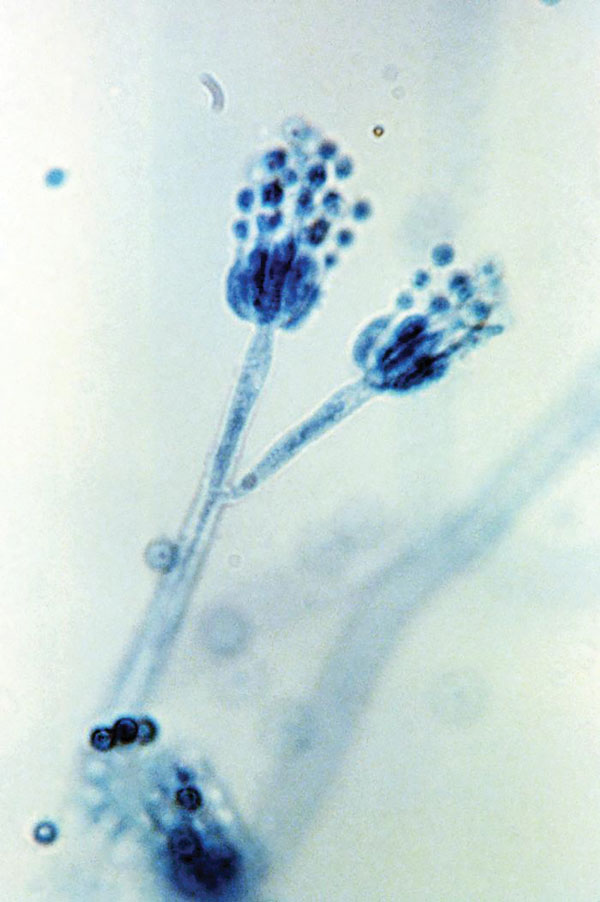Volume 25, Number 1—January 2019
Etymologia
Etymologia: Penicillin
Figure

Figure. Two conidiophores of Penicillium frequentans fungi, also known as P. glabrum. The conidiophore is the stalked structure whose distal end produces asexual spores (conidia) by budding. Original magnification x1,200. Photo: CDC/Lucille Georg/1971.
Page created: December 18, 2018
Page updated: December 18, 2018
Page reviewed: December 18, 2018
The conclusions, findings, and opinions expressed by authors contributing to this journal do not necessarily reflect the official position of the U.S. Department of Health and Human Services, the Public Health Service, the Centers for Disease Control and Prevention, or the authors' affiliated institutions. Use of trade names is for identification only and does not imply endorsement by any of the groups named above.